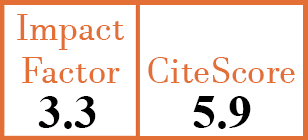Full Papers
Clinical outcomes in a cohort of Colombian patients with rheumatoid arthritis treated with Etanar, a new biologic type rhTNFR:Fc
P.I. Santos-Moreno1, G. Sánchez2, D. Gomez3, C. Castro4
- BIOMAB IPS: Rheumatoid Arthritis Center, Bogotá, Colombia.
- SIIES Research and Education in Health, Bogotá, Colombia. guillermosanchezvanegas@gmail.com
- BIOMAB IPS: Rheumatoid Arthritis Center, Bogotá, Colombia.
- SIIES Research and Education in Health, Bogotá, Colombia.
CER8377
2015 Vol.33, N°6
PI 0858, PF 0862
Full Papers
Free to view
(click on article PDF icon to read the article)
PMID: 26343288 [PubMed]
Received: 16/02/2015
Accepted : 28/05/2015
In Press: 07/09/2015
Published: 15/12/2015
Abstract
OBJECTIVES:
To evaluate the clinical response at 12 month in a cohort of patients with rheumatoid arthritis treated with Etanar (rhTNFR:Fc), and to register the occurrence of adverse effects.
METHODS:
This is a multicentre observational cohort study. It included patients over 18 years of age with an active rheumatoid arthritis diagnosis for which the treating physician had begun a treatment scheme of 25 mg of subcutaneous etanercept (Etanar ® 25 mg: biologic type rhTNFR:Fc), twice per week. Follow-up was done during 12 months, with assessments at weeks 12, 24, 36 and 48. Evaluated outcomes included tender joint count, swollen joint count, ACR20, ACR50, ACR70, HAQ and DAS28.
RESULTS:
One-hundred and five (105) subjects were entered into the cohort. The median of tender and swollen joint count, ranged from 19 and 14, respectively at onset to 1 at the 12th month. By month 12, 90.5% of the subjects reached ACR20, 86% ACR50, and 65% ACR70. The median of DAS28 went from 4.7 to 2, and the median HAQ went from 1.3 to 0.2. The rate of adverse effects was 14 for every 100 persons per year. No serious adverse effects were reported. The most frequent were pruritus (5 cases), and rhinitis (3 cases).
CONCLUSIONS:
After a year of following up a patient cohort treated with etanercept 25 mg twice per week, significant clinical results were observed, resulting in adequate disease control in a high percentage of patients with an adequate level of safety.


